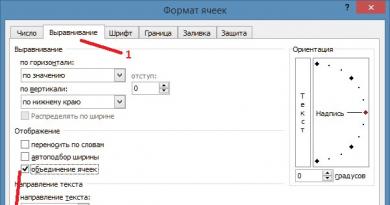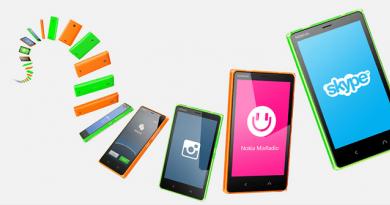USB 3.0 input does not work. USB port does not work after reinstalling Windows
With the widespread use of USB, USB 3.0 hard drives have become increasingly popular among computer users in recent years. Like any other device, external HDDs also have their drawbacks, one of which we will consider in this article. After connecting the drive to a USB 3.0 port, some users encountered the problem that the drive was unreadable by their operating system. The drive is not recognized in Windows and does not appear in Explorer.
Don't panic prematurely. Although this problem may seem scary, it can be fixed, and we will help you deal with the issue with a couple of effective solutions. It is not necessary to look for just one among all the methods listed below. Just gradually follow all the steps and the disk will come back to life.
- 1. Restart your computer.
- 2. Check if the hard drive works on another PC.
- 3. Connect other USB devices to see if they work.
Fix Error External USB 3.0 Drive Not Recognized
Method 1: Update USB Driver
1.
Open My computer > select Properties of the system
Alternative method: right-click on My computer and select Properties.

2. Open Device Manager located in the left pane.
Useful articles
 How to recover data and make it work...
How to recover data and make it work...

 Effective upgrade - how to update your computer...
Effective upgrade - how to update your computer...

3. Open USB controllers and next to the one you need, if the controller does not have the latest driver, a yellow exclamation mark will appear. Click the device next to it and select Update drivers.

4. Now click on Automatically search for updated drivers to install the latest software. Wait for the process to complete and try connecting the hard drive again.

Method 2: Use Disk Management and let the computer recognize the USB 3.0 HDD
1. Open start menu and go to Control Panel.

2. Go to menu Administration and open Computer management.

3. Once the window opens, click Disk management and find the device you need.

4. Right-click on the drive and select Format.
Additional Help
Formatting a disk and losing important information can sound very scary to the user, so we will tell you how you can restore your device without losing the necessary files.
Starus Partition Recovery will be a good choice for any user who is faced with the problem of an unreadable hard drive. The program will not only allow you to recover lost data, but also open logically damaged partitions.
Below is a brief guide that can help you recover information:
1. Connect an external USB 3.0 hard drive to your computer and launch the application. The program will immediately prompt you to scan the device of your choice.

2. Select the logical partition or physical drive you want to scan.

3.
Next, the program will offer you two options for analyzing the disk.
By selecting Quick Scan, the utility will perform a superficial assessment of the device and find all the main files, however, it is worth mentioning that such a check is not deep. Full analysis, in turn, will scan the device as thoroughly as possible, which will allow you to find any information that has left its trace.

Once the analysis is complete, you can export documents to any safe location on your computer in two clicks, and then format your external hard drive.
Not so long ago I encountered such a problem on an already installed Windows 8.1 operating system. The computer was handed to me so that I could reinstall the system from Windows 8.1 to Windows 7, and first of all I checked the USB input. I connected a flash drive and a computer mouse to it, but the laptop did not see any equipment. Then I noticed that the USB port itself is blue, which indicates that it is USB 3.0
It doesn't work for only one reason: drivers for USB 3.0 are not installed on the system.
To check the presence of drivers in the system, look in the device manager to see if there are any questions or other signs next to the installed drivers. If there are no suspicious signs, then the driver is installed in the system, but it is either old or does not fit the operating system.

What are the options for solving the problem?
1. As an option, I loaded USB 3.0 drivers for Intel, AMD and Asus motherboards onto my server. You need to download one of the presented drivers.
How to find out what motherboard you have?
Laptops usually have an INTEL or AMD type label.
In the device manager, in the USB controllers section, pay attention to the following:

As you can see in the photo above, I have a motherboard with an Intel chipset installed, so the driver needs to be downloaded from this particular manufacturer.
2. Download the DriverPack Solution program, then install or update the USB 3.0 driver. The program is absolutely free and does not require installation, but this version requires an Internet connection.
3. If the top two options did not help you, you must either install from the disks that were given when you purchased the computer, or use my article “Where to download drivers”. In this article, I showed how to download firewood from the official websites of such manufacturers as Acer, Samsung, Toshiba and Dell. A video is attached to the article.
But I think that the first option will definitely help in solving this problem.
If we connect a 3.0 flash drive to a computer that supports USB 3.0 ports, we see the message “ This device can perform faster when connected to Super-Speed USB 3.0“, this, friends, means that we either do not insert the flash drive into the USB 3.0 ports (with the blue tongue), or there are problems with their functioning, and they work in USB 2.0 mode. What are the causes of problems with the operation of USB 3.0 ports on computers, and how such problems are solved, we will try to understand this in today’s article.
Let me remind you that the bandwidth of the USB 2.0 interface is 60 Mb/s, and USB 3.0 is 10 times greater, 625 Mb/s. Naturally, few of the removable drives connected to a computer’s USB 3.0 ports operate at the limit of this interface’s capabilities, but it is of fundamental importance for individual storage devices. For example, many modern models of external HDDs using a USB 3.0 interface can provide a linear speed of 100-170 MB/s. Actually, the same as when connecting internal hard drives to the SATA interface. Whereas on the USB 2.0 interface, the linear speed of external hard drives on average usually remains at around 30 MB/s. Flash drives 3.0 on a USB 3.0 interface write data 2-3 times faster, and read data 3-5 times faster. By the way, we talked in detail about the speeds of flash drives on USB 2.0 and 3.0 interfaces. In general, friends, if you have a 3.0 removable drive, I think it’s worthwhile to understand the functionality of the USB 3.0 port if there are problems with it.
BIOS settings
USB 3.0 ports can operate within USB 2.0 capabilities if configured to do so in the BIOS. This point needs to be checked first. We go into the BIOS and look for where USB ports are configured, usually this is the “Advanced” section of the advanced settings and the “USB Configuration” subsection. Or something with similar names. Here you need to check if USB 3.0 support is active. The USB 3.0 Support setting must be set to Enable. The “XHCI hand-off” parameter should also have the “Enable” value; it can be called “XHCI Pre-Boot Mode”, simply “XHCI” or something else, but with the presence of the key term “XHCI”.

XHCI is a USB 3.0 controller, and if the BIOS does not implement a separate item to support this interface like “USB 3.0 Support”, its enable/disable is implemented by the controller. On some motherboards, the XHCI controller parameter may have other values such as “Auto” or “Smart Auto”, which ensure that USB 3.0 ports operate in 2.0 mode before the operating system boots with its USB 3.0 drivers. And such values are usually set by manufacturers of computer devices by default in order to make it possible to work with a modern USB interface inside operating systems, while avoiding the failure of the installation of some of them, the distribution of which does not include USB 3.0 drivers. The most striking example is the official builds of Windows 7, the problem with the lack of drivers for which we discussed and solved. If, friends, your PC or laptop has working USB 2.0 ports (with a black tab) for cases of installing Windows 7 without integrated USB 3.0 drivers, you can safely set the XHCI controller setting to the “Enable” position. Just when installing the “Seven”, do not forget that the flash drive must be inserted into the USB 2.0 port.
Driver update
Inside Windows, the USB 3.0 interface can operate at the USB 2.0 level for the simple reason of incorrect installation of the controller driver. This problem can be solved by any of the methods of dealing with incorrectly installed drivers - either updating them or reinstalling them. To begin with, we use the standard capabilities of Windows. Let's go to the device manager. Expand the “USB Controllers” branch. Click on extensible host controller. More often it is listed as “Intel(R) USB 3.0 Extensible Host Controller,” but in our case, for example, its manufacturer is the Japanese company Renesas. Call the context menu on it and select driver update.


